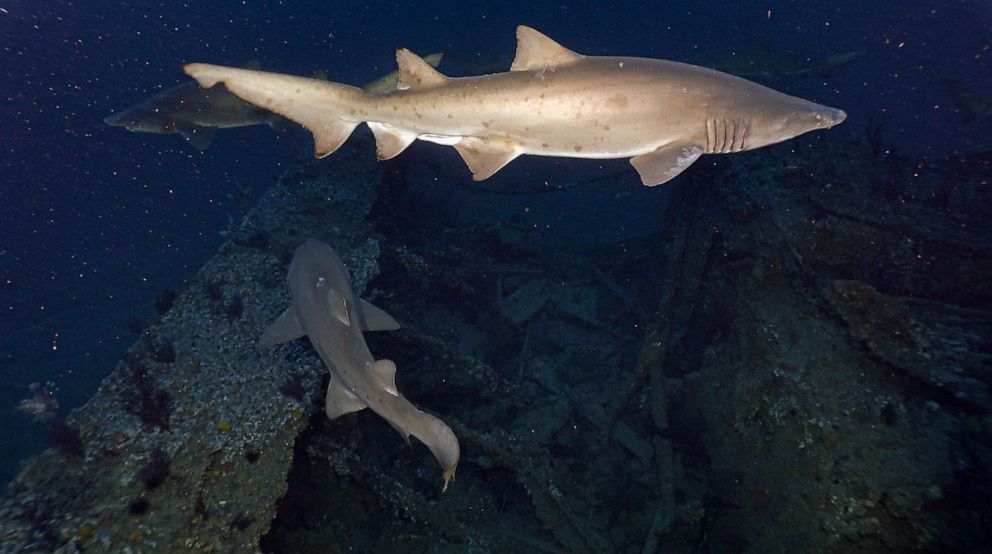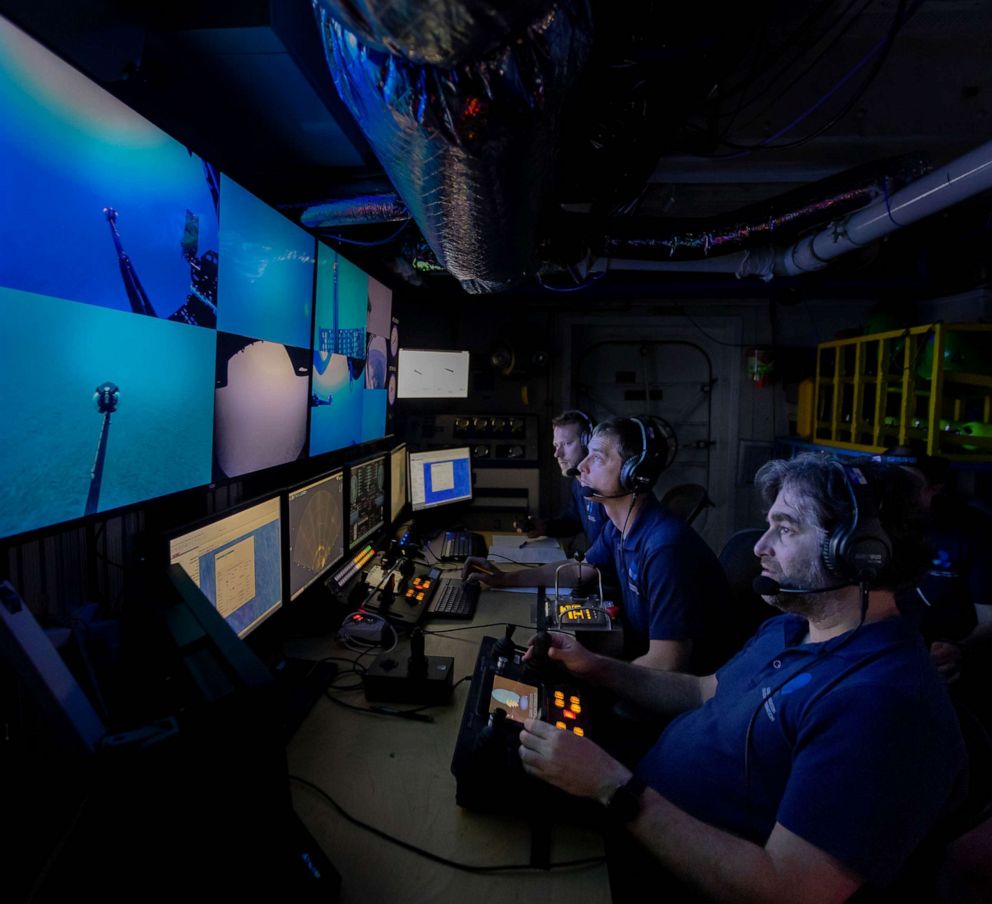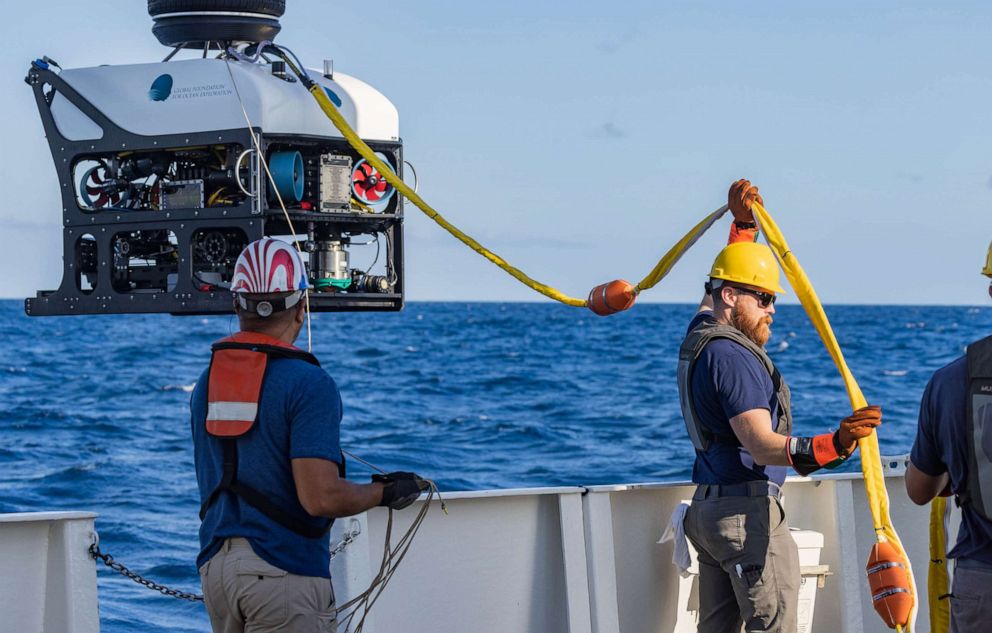See inside a shipwreck thousands of feet beneath the Atlantic Ocean
The Valor of the Atlantic is exploring several shipwrecks off the East Coast.
Thousands of feet underneath the Atlantic Ocean lies relics of a bygone time -- multiple shipwrecks that have transformed into homes to thousands of marine creatures.
Now, history and biology enthusiasts alike can experience a dive into these underwater museums, no scuba tank needed.
The National Oceanic and Atmospheric Administration has teamed up with the Global Foundation for Ocean Exploration and the North Carolina Office of State Archaeology to allow viewers to explore notable shipwrecks off the North Carolina coast. The ships date from the Civil War to World War II and "represent our nation’s naval innovation," according to NOAA.

One of the most noteworthy ships is the Civil War-era USS Monitor, a 240-foot ironclad warship built for the Union Navy and completed in 1862.
President Abraham Lincoln commissioned the ship after he discovered the Confederate Navy was constructing its own ironclad warship in Hampton Roads, Virginia, according to NOAA. Swedish American inventor John Ericsson constructed the plan for the vessel, which included a rotating gun turret, low draft, sleek profile and what Ericsson described as an "impregnable battery."
The ship, constructed in Brooklyn, New York, launched onto the East River on Jan. 30, 1862. After helping to win the Battle of Hampton Roads in Virginia later that March, the USS Monitor sailed farther south.
It was Mother Nature that eventually took out the powerful ship. On Dec. 29, 1862, the USS Monitor was off the coast of Cape Hatteras, North Carolina, when unforgiving winds and waves ravaged the crew and the hull of the ship, causing leaks to develop, the ocean water flooding the engines and reducing steam pressure needed for propulsion.

The crew lit a red lantern, a signal of distress, and the USS Rhode Island, the aid of tug, deployed their lifeboats. Sixteen members of the USS Monitor crew died in the wreckage.
A team of scientists on board a research vessel for Duke University discovered the remains of the ship, which were lying upside down, in 1973 and confirmed that it was the USS Monitor the year after. In 1975, the site was the first to be designated a sanctuary under the National Marine Sanctuary Act and has since yielded a variety of artifacts, including the ships signature turret.
More than 150 years after the USS Monitor fell victim to the mighty sea, a mission, titled "Valor in the Atlantic," will use state-of-the-art underwater drones and other technologies to allow land dwellers to explore the historic shipwreck and five others in the region, including the LV-71, the USS Virginia, the USS New Jersey, the USS YP-389 and the E.M. Clark. The equipment includes remotely operated vehicles with 4K cameras and lighting, which will give viewers an incredibly clear picture of the wreckage, Melissa Ryan, vice president of the nonprofit Global Foundation for Ocean Exploration, told ABC News.
The shipwrecks now serve as living reefs and host a plethora of marine life, the scientist told ABC News.

"Fish love wrecks because they're good habitat, and they're safe," Ryan said, adding that researchers will study the fish populations and whether the same species keep coming back.
North Carolina does not have coral reef, which is more typical off the coasts of South Florida, but the shipwrecks serve as habitats similar to the rocky reefs native to the area, which emerge from the sand and form a habitat that can be matched by corals, soft corals and sponges, Chris Taylor, research ecologist for NOAA’s National Centers for Coastal Ocean Science, told ABC News.
"These shipwrecks are just these objects that erupt from a vast expanse of sand," Taylor said. "They have a higher number of tropical species that we would find on the coral reefs and they reside in these habitats on on the off our continental shelf."
But warming waters due to climate change may eventually change the types of fish populations that gravitate toward the shipwrecks, pushing marine life adapted to warm temperatures farther north, Taylor said.

The heart of the Valor of the Atlantic mission is "honoring those who fought on these ships," Ryan said.
"Someone who probably died on the ship," she added.
The expedition began on May 15 and will run through Wednesday. You can view the livestream here.



